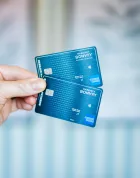As the cost of everything continues to rise, many travellers are looking for ways to reduce costs on their trips. While earning and redeeming points is one of the best ways to minimize costs, there are other useful methods to be aware of, too.
Many countries offer a rebate on taxes paid for goods and services, whereby tourists can be refunded some of the taxes paid during their trip. Each program has a number of inclusion and exclusion criteria, and people who make large purchases tend to benefit most.
In this post, let’s have a look at the European Union’s tax refund program, which is known as the VAT refund. Specifically, we’ll look at what a VAT refund is, eligibility criteria, and how to submit claims to get back some of your money on your next trip to Europe.
What Is a VAT Refund?
Value Added Tax (VAT) is similar to the sales tax that you’d find when shopping in North America. It’s a tax added onto purchased goods and services, and is used instead of sales tax in many parts of the world, including in the European Union.
While VAT is similar to sales tax, the amounts tend to be significantly higher in the EU, with the standard VAT ranging from a low 17% in Luxembourg to a high of 27% in Hungary.
Although these are the standard VAT rates, some items may have a lower VAT rate, as countries can choose to offer a reduced VAT rate on certain items.

In general, European countries offer tax refunds to encourage tourists to visit and spend money, thus helping to boost their economy.
In the European Union, exports are exempt from VAT. Purchases by foreigners in the EU are considered to be exports, as long as you’re actually taking the items outside of the EU.
It’s important to know that unlike sticker prices in North America, which typically exclude sales tax, European prices include VAT. So, while the VAT may be 17–27%, you won’t receive a refund of 17–27% of the total purchase, but rather on the base amount before the tax is applied.
For example, if you buy a VAT refund-eligible item for $1,000 in Hungary, with 27% VAT already factored in, you’ll actually be paying $787.40 before tax. Thus, you’re eligible to receive a VAT refund of $212.60, which is 27% of the base price of $787.40.
As you can see, depending on the amount of your purchase and the EU country in which your purchase was made, it can absolutely be worth your time and effort to complete the VAT refund process, especially if you’ve made any larger purchases on your trip.

Who and What Is Eligible for a VAT Refund?
Most importantly, you’re only eligible for a VAT refund as a non-EU resident visiting the EU for less than six months.
To be eligible for a VAT refund, you must:
- Be a visitor in the EU
- Reside in a country outside the EU
- Spend over a specific threshold for VAT-eligible items
There are further requirements to be aware of, which differ from country to country.
Not all purchases are eligible for a VAT refund. The EU VAT refund is intended to refund VAT on items that are not consumed while in the EU, and that can be carried in personal luggage.
This means that larger items, such as cars and yachts, are excluded. Similarly, purchases that are consumed or used while travelling, such as food and hotel stays, are also excluded from VAT refund eligibility.

Note that there are specific business-related scenarios where a VAT refund may still be applicable to VAT on purchases that are otherwise ineligible, which is beyond the scope of this article.
The product(s) purchased must meet a minimum spending threshold in order to be eligible for a VAT refund. To further complicate matters, the minimum amount is different in each country.
For example, the minimum amount eligible for VAT refunds in Germany is only €25, while in France it’s much higher at €175.
Note that this minimum amount is per transaction at a single retailer. If you have multiple items that are each below the threshold, you’ll want to pay for them all together at one store, as you won’t be able to combine purchases made across different retailers for VAT refund eligibility.
You must pay for the item in full. The refund comes later on in the process, and you won’t receive an immediate refund on the purchase price.
The traveller applying for the VAT refund must be there in person. While someone else can pay on your behalf, you’ll have to physically be present while making the original purchase to prove your eligibility with your passport.

Importantly, the VAT-refundable item must leave the EU with you by the end of the third month after it was bought. For example, if you made a purchase from an applicable VAT-free shop on June 5, it would have to leave the European Union no later than September 30 of the same year.
Technically, the items must also be in brand-new condition, with price tags attached, when you depart from the EU. In practice, I’ve found that this requirement can be a little flexible, though it’s best to respect it whenever you can.
Keep in mind that while you may satisfy all of the above conditions, not all shops offer VAT refunds. You’ll want to make sure ahead of time before making a large purchase, either by contacting the specific retailer ahead of time, or by asking someone while you’re in the store.
Many shops will have a sticker displayed stating that it’s a tax-free or VAT-refund eligible store.

While this guide is specific to countries in the EU, note that other countries may offer their own version of the VAT refund. Be sure to look into such programs before heading out on your next trip.
For example, some, but not all, European countries take part in the VAT refund program. Switzerland has its own VAT refund program, while the UK ended theirs on January 1, 2021.
How to Claim a VAT Refund in the European Union
If you meet all of the above requirements, there are still some steps you must follow to receive your VAT refund. Preparing for a VAT refund can be broken down into four steps:
- Show your passport or other documentation proving that you reside outside the EU at check-out.
- Fill out a refund form that the eligible retailer will have on hand, and ensure that the retailer also fills out their section.
- Receive an invoice or receipt for the purchase(s), and keep it with you until you are ready to leave the EU.
- Bring the goods purchased, refund form, and receipt/invoice with you to customs officers at the last EU country you leave from. You’ll need to have the customs officers stamp your refund form as proof of export.
Once you’ve completed these steps, the last hurdle to getting a VAT refund is to bring everything to a separate kiosk at the departure point, if one is available. The most common services are Global Blue and Planet, whose stickers you’ll also see in shops who offer VAT refund-eligible shopping.

At the kiosk, you’ll be refunded immediately if you have all of the eligible documents, either in cash or issued to a credit card number that you provide to the kiosk agent.
If there isn’t an available service at your point of departure, you’ll have to mail your stamped refund form to a specific address that will be provided to you in the shop. After that, you’ll receive the refund either directly to your credit card or by a cheque in the mail.
Other Things to Know About VAT Refunds
No matter which EU countries you bought your VAT refund-eligible items from, you’ll get the refund form(s) stamped at the place of departure from the EU.
Suppose you bought a custom outfit in Italy, football cleats in Germany, and then designer shoes in France. Before flying home from Paris, you should have three separate refund forms that will all need to be stamped by a customs officer at the Paris airport.
If you’re leaving the EU by plane, you’ll want to make sure to allow for extra time at the airport, as sometimes the VAT refund lines can be quite long.
And if you’re departing the EU by train, you should consult the national authorities or refund company on what is required for your specific train route. You may have to get off the train at the last stop in order to get your refund form stamped.

Despite saving money through the VAT refund, you’ll still be responsible for declaring all goods and services brought back into your home country. Depending on the value and type of item you’re bringing back, you may have to pay additional duties and/or taxes on the imported goods.
There’s another way of VAT-free shopping without having to go through this whole process. You can always have items shipped directly from the store to your home country, if the store offers that service.
Going this route will also spare you from paying the VAT; however, you’ll most likely pay a lot more for shipping, as well as any customs and handling fees, that may not make it worth the effort.
Conclusion
Whether you’re buying designer goods or you’re just looking to pick up some souvenirs on your next trip to Europe, it’s helpful to know the ins and outs of the European Union’s VAT refund program.
Be sure to check the minimum spending thresholds in each country you plan to visit, and then make sure your purchases are eligible.
Since there are many steps involved, claiming VAT refunds may be only be worthwhile if there are larger purchases involved. It’s not often that your final transaction on a trip results in a hefty refund, but it’s a nice way to finish up an international adventure.




















